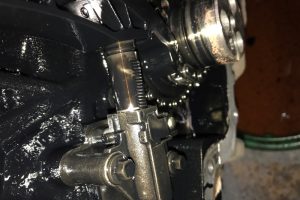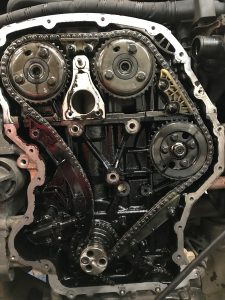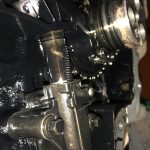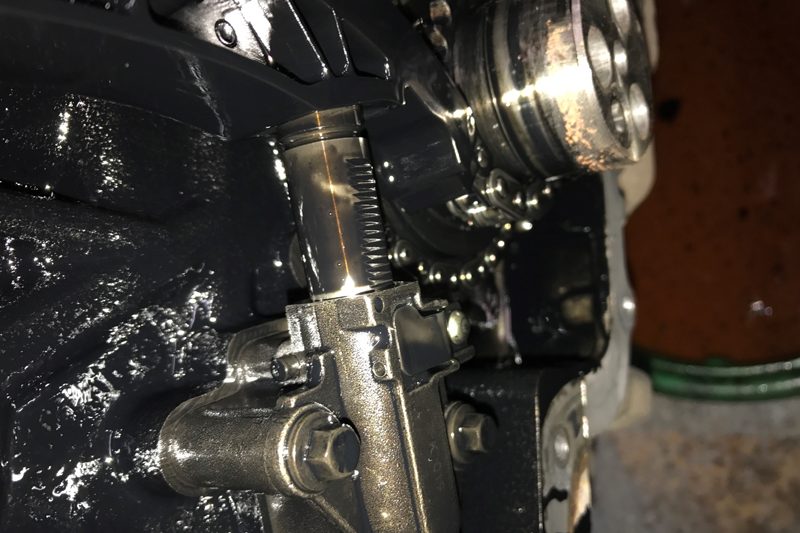FAI Auto Parts look at identifying the cause of original failure to avoid repeat problems.

Installing a replacement timing chain kit is a costly process which should not be undertaken as a simple remove and replace, but there must be a methodical approach to identify the cause of the original failure. Not to do so will only cause a repeat of the original failure.Contrary to popular belief, timing chains do not ‘stretch’. The factory set clearances between the internal diameter of the roller and the link pins increase, making the chain appear to stretch. The most common cause of wear of the pin and/or the internal diameter of the bush is degraded oil. The degradation manifests in several ways, the most common being fuel dilution – metallic or silicon (dirt) particles suspended in the oil which have built up over time.

If the fuel exceeds 5% or the number of metallic particles exceeds 100ppm (parts per million) or silicon exceeds 15ppm, the oil is deemed to be hostile, no longer providing protection to the moving parts of the engine. This environment actively promotes rapid wear, which will cause the wear described. In turn, the chain will elongate until eventually the tensioner is at its maximum and no longer able to apply vital working tension to the chain. On a chain of 120 links, as little as 4mm ‘stretch’ can render the chain useless. It is therefore vital that when the chain kit is replaced, the following actions must be taken:
1. Flush engine oil system before dismantling the TCK.
2. Always use the approved locking tools.
3. Remove sump and rocker cover to check for any damage. Replace any damaged parts.
4. Remove and inspect oil pump and pick up pipe. Clean thoroughly and replace as required.
5. Check all oil galleries and oil feed holes to ensure there are no blockages.
6. Refill engine with manufacturer’s recommended grade of oil and replace oil filter.

The photos displayed are of a Ford Transit 2.2TDCi which had covered over 13,000 miles when the driver noticed the chain had become noisy. The amount the chain had ‘stretched’ can be clearly seen in the photograph where the sprockets have been locked into the correct position and the chain is slack between the camshaft sprockets. Removal of the TCK and analysis of the oil showed that the oil was severely hostile with almost five times the limit of Fe (iron) at 488ppm and Si at almost four times the limit at 58ppm particles.
The laboratory report of the timing chain showed classic wear of the internal diameter of the roller bushes, which had taken the clearance/tolerances of the chain beyond the maximum permissible. This ‘stretch’ meant that the tensioner was unable to apply working tension to the chain assembly, causing the noise the driver reported. Had the engine been thoroughly cleaned during the installation, this failure would have been prevented. Every FAI timing chain kit is manufactured to the highest standards, so you can be confident when fitting it that you are fitting the best.











